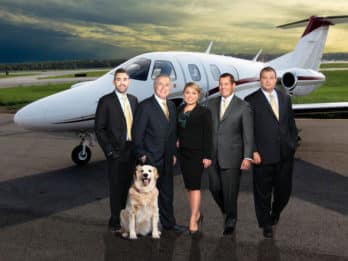Hawker 800 Crash: Cockpit Voice Recorder Transcript
HAWKER 800 CRASH IN MINNESOTA
Cockpit voice recorder transcript released
The NTSB just released a transcript of the cockpit conversations of the captain and first officer of a crash that took their lives and six others in Minnesota last summer. There were no surprises here. The flight crew flew into an area of very severe weather with the airport literally surrounded by thunderstorms that reached as high as fifty thousand feet and had spawned at least one tornado. They experienced turbulence and heavy rain as they approached the airport, which had a wet runway from a recent very heavy shower.
The crew violated the sterile cockpit rule – no non-pertinent conversation below ten thousand feet, distracted themselves by fooling with the radar tilt when they had the runway in sight, and failed to properly conduct both the approach checklist and the pre-landing checklist. Worse yet, they failed to extend full flaps, dooming their flight. Without full flaps deployed they could not activate the lift dump feature in the Hawker jet, an absolutely mandatory condition if they ever hoped to luck out and stop on a runway that was too short for this aircraft under those conditions.
The lift dump system extends spoilers both above and below the wing. Without it, the airplane doesn’t place enough weight on the wheels early enough to spin them up and allow the anti-skid equipment to work. In fact, with the engines at idle thrust, an attempted go-around was futile given the normal time it takes for a crew to react and change the aircraft configuration.
As in most aircraft accidents, there is more than one cause. Anxiety over the weather, the rough ride, the short runway, the non-pertinent conversation, and the failure to complete the checklist all combined to doom this flight. The failure to anticipate the heavy weather, the effect of water on the short runway, the inability of the aircraft to safely operate within the available runway contributed to poor decision-making by this crew. Sadly, even a crew that is well trained, skillful and has the best of intentions also becomes the victim of a combination of events that only they could avoid – a chain that must be broken if they and their passengers are to survive. It didn’t happen, and they too paid with their lives.
Every pilot talks about the near accident he has had with the bravado that only a hero (in his own mind) can bring to the discussion. The problem is that if the stars line up and the events build in an inexorable combination of troubles, one day those pilots won’t be able to tell their story. No doubt these pilots were careful, decent, well-intentioned men. Unfortunately this disaster began with faulty pre-flight planning, faulty appreciation of the heavy weather that would be at the destination, faulty cockpit crew coordination that led to the careless skipping of what for this airplane was critical to a successful landing, full flaps.
This accident will mean nothing if it doesn’t serve as a lesson to all pilots that the Federal Aviation Regulations, known as operating rules, are minimum standards. That means that even if they are complied with to the letter, they may not be enough to successfully complete a flight. The failure to meet those minimum requirements, however, is a virtual guarantee of an accident.
Regardless of what position The Wolk Law Firm must take in the litigation for the deaths of the passengers that follows this accident, all of us, including the families of those passengers who have suffered unspeakable losses, lament the unnecessary deaths of everyone aboard.
– Arthur Alan Wolk




